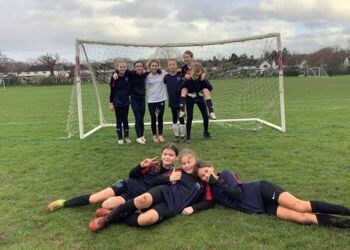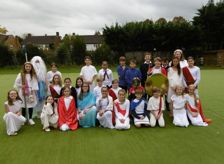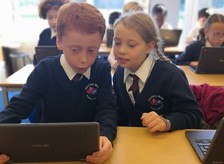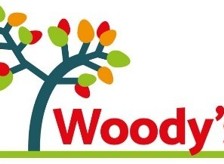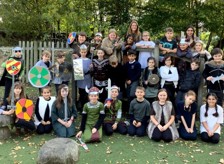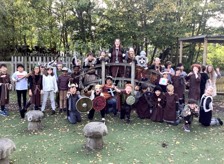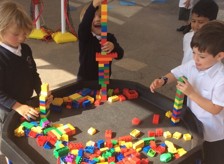 26th April 2024
26th April 2024How We Assess Children's Learning
“The key features of effective learning environments are that they create student engagement and allow teachers, learners, and their peers to ensure that the learning is proceeding in the intended direction. The only way we can do this is through assessment. That is why assessment is, indeed, the bridge between teaching and learning.” Dylan Williams ‘Embedded Formative Assessment’
At Hinchley Wood Primary School (HWPS) we have created a rich and vibrant curriculum to excite and motivate our pupils in their learning. We have ambitious aspirations for all children to make rapid progress and achieve highly.
At HWPS, we see assessment as an integral part of teaching and learning and it is inextricably linked to our curriculum. We use three overarching forms of assessment in our school:
- Day-to-day in school formative assessment
- In school summative assessment
- Nationally standardised summative assessment
Formative Assessment
Formative assessment is the most crucial type of assessment, as it should be used daily to inform the next steps in teaching and learning. It should be used as an opportunity to quickly identify gaps in children’s learning and misconceptions and use this information to respond and adapt teaching as necessary. Teachers know their children best and are the most accurate judges of their children’s progress. At HWPS we use a range of:
- In class questioning
- Marking and feedback (see Marking and Feedback Guidance under the Policies section)
- Observations during lessons
- Evidence in books, whiteboards etc
- Low stakes quizzes
- Evidence from programmes such as Spelling Shed/TT Rockstars
- Self/peer assessment
It is important for teachers to ensure that their assessments come from a wide range of sources as this will give evidence that children are able to retain what they have been taught and apply it in a variety of different ways.
In School Summative Assessment
Summative assessments are used to monitor and support children’s attainment and progress. These provide teachers with an opportunity to evaluate pupil learning at key points in the year and also to use this to evaluate their own teaching. Summative assessments will also be used at a whole school level to monitor the performance of subjects and cohorts, identify where interventions may be required and to work with teachers to accelerate progress for any children identified as falling behind.
Summative assessments for reading, writing, maths and science will be entered into our FFT tracking system at 3 points each year. Children’s attainment in these subjects will be entered onto a curriculum tracker, where they will be judged as ‘working below age related expectations’, ‘working towards age related expectations’, ‘working at age related expectations’ and ‘working at greater depth’. For other subjects, teachers will record children who are working towards or at greater depth within the subject at the end of each unit and use this information to inform scaffolding and challenge within their future planning. At the end of the year teachers will judge whether children are working below, towards, at or at greater depth overall. At HWPS we ensure that we “collect once, use in many ways” so this data will be used to inform pupil progress meetings and generate reports for a variety of stake holders.
In Years 4 – 6 we use GL online assessments in English and Maths. These measure the pupils’ attainment in English and Maths compared to other children across the country in the same year group and provide a standardised test score as well as detailed analysis of any gaps in the children’s learning. The tests are a further layer to help us to enable us to quickly identify any children who are at risk of falling behind, to ensure that measures are swiftly put in place to accelerate their progress. Year groups who undertake nationally standardised assessments will also use previous papers to practice test technique. The data from these will also be used to inform next steps in teaching.
Nationally Standardised Summative Assessment
Nationally standardised summative assessment enables:
- School leaders to monitor the performance of pupil cohorts, identify where interventions may be required, and work with teachers to ensure pupils are supported to achieve sufficient progress and attainment
- Teachers to understand national expectations and assess pupils’ performance in the broader national context
- Pupils and parents to understand how pupils are performing in comparison to pupils nationally. The National Statutory assessments are:
- 'Good level of development' (GLD) attainment measure for pupils in the EYFS
- Year 1 phonics screening test
- End of KS2 SATs in English (reading, writing, and GPS), mathematics and science (end of Year 6)
Click Here for the National Assessment Results
How we share this information with parents
Parents have two parents’ evenings, one in Autumn 2 and one in Spring 2. They also receive a written report in Summer 2 and have an opportunity to discuss this with their child’s class teacher. In the autumn term parents’ evening, discussions will focus around initial formative assessments. In the spring term parents’ evening details of any in school summative assessments will be shared. Children will take home their maths and English books home prior to each parents’ evening to share their progress with their parents.
In July of each year parents receive an annual report and outcomes of any statutory assessments. Parents are welcome to meet with class teachers to discuss the content of this report if they want to. Annual reports inform parents whether their child is working towards, at or at greater depth within age related expectations for each subject.


